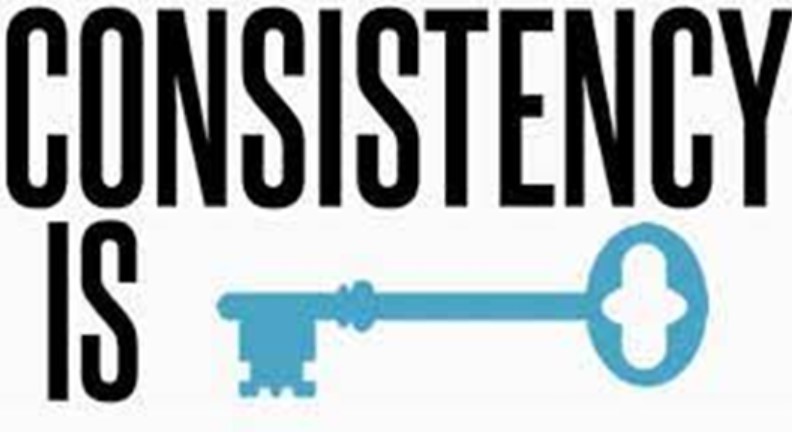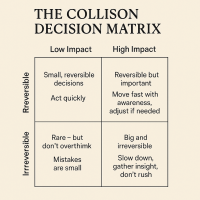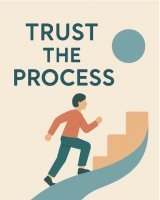Why Understanding Ergodicity Is Critical To Your Long Term Survival
How Not To Be Fooled By Randomness

Introducing Ergodicity
Ergodicity is an ugly word from the world of mathematics. It is an umbrella term for two sets of conditions of probability and outcome.
These two conditions form the basis of a lie that you have been sold by governments, economists and investment "advisors" for the past 150 years.
Ergodicity matters, and is a major factor in your long term health, wealth and peace of mind.
What may seem to be a dry and boring exercise in semantics and mathematical fancy footwork very rapidly morphs into:
- A potent expose of how we have been misled and ripped off by the so called experts, and then offers
- An explanation of how to side step these lies and fallacies and position yourself for survival and success.
This is about:
- Randomness
- Probability
- Time
- Sequence
- Outcomes
The two conditions of ergodicity are: [1] Ergodic systems and processes - where there is a consistency of outcome. [2] Non-ergodic systems and processes - where there is a certainty of extreme variation. We
all want to be enjoying the certainty offered by the first condition,
but in reality are flying blind on the roller coaster ghost train of the
second.
The failure of the "experts" to understand the core characteristics of what is required to achieve a consistent outcome and to disregard the certainty of extreme variation means that your long term health, wealth and peace of mind are at risk.
You think I exaggerate? Reflect on these realities at time of writing in 2022:
- Why do you think the peoples of Europe are facing catastrophic price rises in the costs of their energy?
- When I say catastrophic price rises I am talking about increases of 20 to 50 times [yes twenty to fifty!] in the price of the Liquid Natural Gas [LNG] which at time of writing they are so desperately trying to import?
- How the German government has found itself so desperately exposed after decades of single source reliance on Russia?
- The arrogance of the UK Government's energy policy which has only been superceded by its ignorance in the light of recent events: "The Government is relying on a policy of ‘gas by default’ which assumes there will always be a secure and affordable supply of natural gas to meet demand. This is guaranteed by sufficient physical infrastructure, diversity of supply and a reliance on market forces." [But then this shouldn't be a surprise as the Government minister heading this at the time was the now discredited Kwasi Karteng who recently tanked the UK public finances with his recent mini-budget of unfunded tax cuts.]
- Why do you think that here in the UK, in the winter of 2020/21 we had no secure longterm contracts for the supply of LNG and that the Prime Minister of the day had to go cap in hand to the ruler of Qatar to secure 4 ships of LNG?
- Consider the febrile and totally inadequate global response to the recent pandemic and the devastating second order consequences on employment and business failures as a direct result of the lock-downs that were imposed upon us.
- Reflect on how the rapidly rising rates of inflation and the attendant interest rate rises are going to devastate the finances of countless millions of people in the first world and cause countless deaths in third world countries.
- Consider the many financial scandals in recent decades that have destroyed wealth - ordinary peoples' savings as well as the rich - exemplified in 2008 by the unfettered greed and unregulated stupidly of major US banks and financial institutions that came within days of wiping out the world's financial systems and that would have reduced us to the stone age in about 10 days.
- Here in the UK at time of writing, and beyond the recognition or comprehension of most people, is the looming collapse of major pension funds as a result of their over-exposure to risky financial instruments aptly named Liability Driven Investments [that's an oxymoron if ever I heard one!]. The effect of this will be to wipe out the long term savings and retirement incomes of large numbers of the population.
- And here's the big one - reflect on how it is that at time of writing the world is closer to a nuclear war than it has been since the Cuban missile crisis in 1962? Don't just default to the easy answer of blaming Vladimir Putin [and of course he is culpable for engaging in the Russian invasion of Ukraine] but consider the policies and actions of the US and NATO governments over the past 15 years, and the assumptions that were made, that have led to this situation.
Explaining Ergodicity
At the end of this article I have included a bibliography of some of the sources I have used in research into ergodocity. As you will see most, if not all, of the material on this subject is written for the investment community and the terminology used and the illustrations given reflect that.
The result of this is that much of this material is impenetrable to the lay reader.
This is unfortunate because these concepts are - at root - fairly straight forward, and have universal application.
Having said all that, I am reasonably bright and it took me about three working days of study and reflection to get to a position of being able to reframe these ideas in a way that makes them easy for the lay reader to understand and apply.
We are going to look at
- Each condition of ergodicity in more detail and attempt to define clearly what it means and how to apply it.
- The contraints on achieving a consistency of outcome and how best to work within those constraints to get as close as possible to the desired consistency.
- How to protect ourselves against extreme downside risk.
- How to position ourselves to identfy and exploit the extreme upside opportunities which always accompany downside risks and what are often referred to as Black Swan events.
- How to leverage these protections and positionings to achieve a greater level of consistency in the outcomes we experience.
So here goes:
[1] Ergodic systems and processes - where there is a consistency of outcome

Unless a system or a process can demonstrably meet all of these criteria then there can be no certainty of a consistent outcome.
Every article I have read on ergodicity tries to illustrate the conditions with thought experiments based on russian roulette and games of chance, and they focus on the probability of different outcomes.
But, in common with many readers, I do not gamble so I find these illustrations hard to relate to.
The only area in life which does fully conform to these criteria is in the application of the laws of Newtonian Physics and Classical Mechanics namely: gravity, motion,
space, time, mass, force, momentum, torque, and angular momentum.
[2] Non-ergodic systems and processes - where there is a certainty of extreme variations
How can we achieve a consistency of outcomes against the certainty of extreme variations?

As we have already established above, once we move away from newtonian physics and classical mechanics it is impossible to achieve a 100% consistency of outcome in any area of life.
So the blunt and scary reality is that we face extreme variation in most, if not all, areas of life together with the consequences.
The most obvious example of extreme variation is your mortality. You are going to die. The only unknowns are how and when.
Fortunately, there are a wide range of practical steps that you can take to mitigate the risk of these extreme variations and to position yourself to make massive gains - whenever possible - when they do occur.
In the example of your mortality, whilst you can't avoid it you can take steps to mitigate the effects of this extreme outcome and ensure that your loved ones and dependents are financially protected by having adequate life insurance in place.
Here are two guiding principles drawn from the work of Nassim Taleb [whose work is featured on this site and which I commend to you]:
[1] Learn to perceive the world as it really is - and not to delude yourself into seeing it in the manner that makes you feel most comfortable.
- We like to think of the world in simple and predictable models. While this works much of the time, there are rare and seemingly unexpected fat tail events, known as black swans.
- Black Swans are events that are impossible to predict, rare and with devastating consequences.
- Because our standard models don’t take black swans into account, hidden risk looms behind seemingly safe and predictable events.
- It is extremely foolish to just ignore the potential for black swans to occur.
- To take the view that because we cannot predict them we will pretend they don't occur is setting yourself up for trouble - which of course is exactly how most individuals, companies and governments operate.
[2] Make decisions that focus on the consequences - which you can know - and not on the probability of an event - which you cannot know.
- Your survival depends on the ability to weather black swans.
- The best way to be prepared for black swans is to understand and develop the qualities of antifragility.
- Antifragility is the quality of something that gets better, or thrives, in the presence of disorder.
- It is more than resilience it is the ability to become stronger in the midst of chaos and unpredictability.
- Learning how to live a life of antifragility allows you to deal with the unknown, to do things without understanding them - and do them well.
- It enables you to "think round corners", think and live creatively and learn how to identify and exploit the unseen margins and position yourself for massive gains when these extreme events occur.
Bibliography
- https://taylorpearson.me/ergodicity/
- https://medium.com/incerto/the-logic-of-risk-taking-107bf41029d3
- https://eversightwealth.com/one-portfolio-risk-to-rule-them-all/
- https://neurabites.com/ergodicity/
- https://www.moneyonthemind.org/post/ergodicity-what-does-it-mean-for-behavioural-science
- https://behaviouralinvestment.com/2020/05/13/we-need-to-talk-about-ergodicity/#_edn3
- https://larspsyll.wordpress.com/2012/06/09/randomness-fat-tails-and-ergodicity-a-keyneesian-perspective-on-knightian-uncertainty/
Further Reading:
Understanding Complex Systems Thinking - It's Not Complicated
How Positive Asymmetry Can Transform Your Life
How To Benefit From The Unseen Margins
How to Get What You Value by Changing What You Measure
Next Article: Dealing With Imposter Syndrome
Return from "Ergodicity" to: Walking The Talk
Or to: Mental Models
LATEST ARTICLES
How to See Your Thoughts Without Becoming the Story
 A Practical Guide to Thought-Awareness. You can spend your life inside the stories of your mind without ever learning how to see your thoughts clearly and objectively. Most of the stuff we tell oursel…
A Practical Guide to Thought-Awareness. You can spend your life inside the stories of your mind without ever learning how to see your thoughts clearly and objectively. Most of the stuff we tell oursel…The Collison Decision Matrix - A Simple Framework for Better Choices
 The Collison Decision Matrix Is A Practical Everyday Thinking Tool. Most of us spend a surprising amount of time worrying about decisions. From small ones such as what to wear, what to eat, what to te…
The Collison Decision Matrix Is A Practical Everyday Thinking Tool. Most of us spend a surprising amount of time worrying about decisions. From small ones such as what to wear, what to eat, what to te…The Power Of Asking The Right Question
 The Power Of Asking The Right Question Lies In The Quest For Insight. To experience the power of asking the right question you must develop the practice of asking questions. The best way to improve th…
The Power Of Asking The Right Question Lies In The Quest For Insight. To experience the power of asking the right question you must develop the practice of asking questions. The best way to improve th…Site Pathways
 Here is a site pathway to help new readers of Zen-Tools navigate the material on this site. Each pathway is based around one of the many key themes covered on this site and contain a 150 word introduc…
Here is a site pathway to help new readers of Zen-Tools navigate the material on this site. Each pathway is based around one of the many key themes covered on this site and contain a 150 word introduc…How To Live With Contradiction - Beyond Thought Let Stillness Speak
 A major impact on so many peoples' lives is the situational contradiction of unfilled realistic expectations. So where does all this leave us? Well here we are, with mental equipment that is more lim…
A major impact on so many peoples' lives is the situational contradiction of unfilled realistic expectations. So where does all this leave us? Well here we are, with mental equipment that is more lim…How To Trust The Process Of Mindfulness - Right Now
 In mindfulness, the process isn’t some distant goal — it's what is happening right now. When we talk about how to trust the process of mindfulness the credibility of the process is heavily dependent…
In mindfulness, the process isn’t some distant goal — it's what is happening right now. When we talk about how to trust the process of mindfulness the credibility of the process is heavily dependent…Inner Mastery For Outer Impact - Mental Clarity For Effective Action
 Insights only matter if they translate into consistent action. In a world crowded with quick fixes and motivational soundbites, the theme “Inner Mastery for Outer Impact” calls us to something more e…
Insights only matter if they translate into consistent action. In a world crowded with quick fixes and motivational soundbites, the theme “Inner Mastery for Outer Impact” calls us to something more e…The Wise Advocate - Helping You Achieve The Very Best Outcome
 The focus of your attention in critical moments of choice either builds or restricts your capacity for achieving the best outcome. When we talk of 'The Wise Advocate' its easy to think of the consigl…
The focus of your attention in critical moments of choice either builds or restricts your capacity for achieving the best outcome. When we talk of 'The Wise Advocate' its easy to think of the consigl…Trust The Process - Beyond The Cliche
 The phrase "trust the process" has become a cliche, the woo-woo mantra of the "self help" industry. Those three little words feel like they ought to mean something useful but hidden behind them are a…
The phrase "trust the process" has become a cliche, the woo-woo mantra of the "self help" industry. Those three little words feel like they ought to mean something useful but hidden behind them are a…The Dopamine Delusion - Why Anticipation Beats Achievement
 The thrill we feel is not in the having, but in the wanting. The more we have, the more we want. The more things we acquire and the easier things get for us, the more discontent we feel. The more spo…
The thrill we feel is not in the having, but in the wanting. The more we have, the more we want. The more things we acquire and the easier things get for us, the more discontent we feel. The more spo…The Power Of Silence Is Experienced In Your Use Of Language
 Practise the "Beneficial Neurological Delay" for optimal comprehension. The power of silence is experienced in your use of language, specifically: - How you formulate the words you use to think and in…
Practise the "Beneficial Neurological Delay" for optimal comprehension. The power of silence is experienced in your use of language, specifically: - How you formulate the words you use to think and in…Dealing With Setbacks - 5 Questions To Help You Face Discomfort
 How To Counter The Cognitive Shock Of A Setback. Setbacks challenge your instinctual desire for control and comfort, making it unnatural to respond with calm or acceptance. The reason for these instin…
How To Counter The Cognitive Shock Of A Setback. Setbacks challenge your instinctual desire for control and comfort, making it unnatural to respond with calm or acceptance. The reason for these instin…



